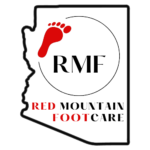Choosing the Right Shoes to Support Your Feet
It’s a fact: we love our shoes, and we love them more and more all the time.
This isn’t just hyperbole or wishful thinking: recent statistics show that total revenue for footwear purchases in the U.S. was $85.84 billion and expected to grow 5.39 percent by 2027. The U.S. leads other countries in our love of shoes, and shoes represent 92 percent of the non-luxury goods market.
Each person is expected to spend $256.40 annually on footwear, and statistically, each person owns 5.7 pairs.
Sure, you may say, “I need all my shoes for different things.” Which is probably true: it makes sense to use different shoes for different functions. Like you wouldn’t, or at least shouldn’t, wear dress shoes on the beach.
These distinctions go beyond fashion sensibilities too: wearing the wrong footwear in the wrong setting can cause damage to your feet over time. Some of these may seem basic, like wearing thick boots when doing hard, messy, and unsafe work, instead of flip-flops.
But footwear experts can also make helpful recommendations about different types of footwear for different situations, based on how well they treat your feet.
Running Shoes
While you can run in any shoe, footwear designed for running has design factors that benefit this activity, including a sole that cushions the foot from repeated ups and downs. A podiatrist can also work with competitive runners to find shoes or inserts to better match someone’s tread. They also need to stay stable and secure – runners don’t want to worry about them coming off or turning and causing ankle damage. Durability is also important – runners put a lot of miles on theirs. There are also different types, including running shoes designed for tracks, streets, or trails.
Walking Shoes
Durability is also important but so is comfort. Shoes for walking are designed to travel distances but not necessarily at a fast pace. They need cushioning to support your feet and joints as you move forward, plus lightweight. Inserts can also be found for different treads that can reduce the impact on legs.
Activity Shoes
This can be useful for anything, so they must protect the feet but still be comfortable for short-term or longer-term activity. They need traction for any occasion. They often have a wider base to allow more front-and-back and side-to-side motion and flexibility. They also should include some cushion in case you jump or change your motion or direction often (like basketball.) A surface that has a good grip and isn’t slippery can also be beneficial.
Therapeutic shoes
Some professions, especially ones where you’re on your feet all day, recommend shoes that provide extra support. Or someone with a past foot injury may benefit from something that has more cushion. These can include hard soles to avoid further trauma or a secure fit.
Managing Foot Pain In Mesa, Arizona
If your feet are sore, even painful or injured after certain activities, you might not have the right shoes. Foot pain from the wrong shoes for the wrong function is actually fairly common. Sometimes you may know right away that something doesn’t fit right, sometimes it may take time to notice damage.
Dr. Spencer Hardy and the staff at Red Mountain Footcare is happy to work with you, learn about your feet and the types of activities you participate in, and offer suggestions for appropriate footwear to benefit your feet and ankles.
Contact us at redmountainfootcare.com or call (480) 219-4100 to learn how we can help!
